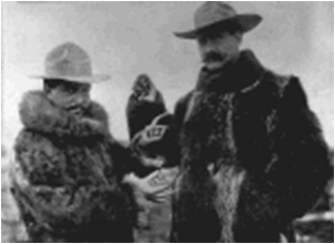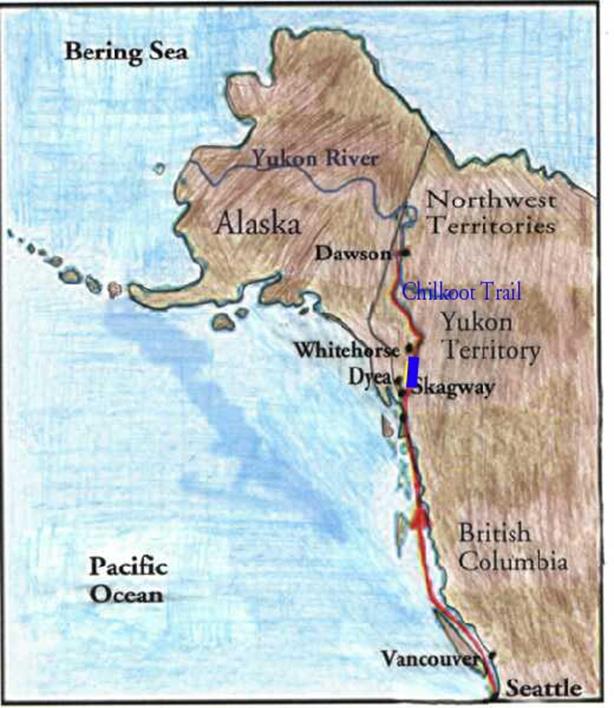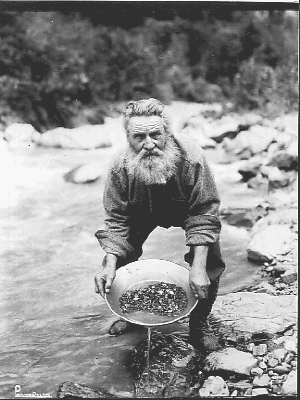



|
RAMSING Slægten |
|
- En slægt gennem 1300 år |
|
Guld feber i Canada |
|
100,000 people have left for the Klondike.
40,000 people have made it to Dawson City.
4,000 people have found gold.
The Gold Rush really isn’t all in Alaska as you would think. Most of it was in Canada. Actually Dawson is in Canada (Dawson was the final destination). If you look at a map (below) you’ll notice it’s really not that far to go even on foot. With the cold weather and crowds of people traveling the trail was tough going.
One klondike miner, was Helge Ramsing, born in Denmark.
Joe Juneau and Dick Harris made a big strike around what is now called Juneau. There were a number of deposits (strikes) found in the interior. There was one at Forty Mile in 1886 and in Birch Creek in 1892. Every time there was a new discovery it brought hundreds of men and women thirsty for gold. But the biggest strike was yet to come. There was a discovery of gold around the Klondike area of Canada’s Yukon Territory in 1896 which caused a small amount of gold fever. Because of the gold rush Alaska’s population grew almost 100% in ten years after the beginning of the gold rush! But, that was soon to end.
Klondike Miners with Gold Nuggets
When the word of gold had come down to the lower 48, there were herds of stampeders who came up to the Klondike. At the beginning it was almost impossible to leave without gold. In fact, there were very few who left with less than $5,000.00. Some of them even became millionaires! When they left on the boat there was at least two tons of gold on it.
The weather during the winter was very harsh and sometimes it got down to -20 F. Most of the men weren’t prepared for the weather. Some people came back with lots of gold, some people came back with a little and some people didn’t even come back at all. But, at least their final resting place was the Klondike, the home of the gold rush.
The Golden Stairs were steps carved in the snow that people would climb. When weather turned out good, people would climb the stairs in a line that strectched out two miles over the trail. When you got in line and you wanted to take a break you would step out to the side, but you couldn't get back in line for at least and hour or two.
|



